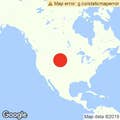HIGHLANDS RANCH, Colorado — She was in her world literature class when she heard three loud bangs. Gunshots. Two bullets came through the walls, hitting her classmate in the foot. For 22 minutes, the 16-year-old sophomore whispered updates to a 911 operator. She texted her mom to tell her that she loved her. “I love you too — why the random text saying it?” her mother responded. “Tell me everything’s OK or I’m going to freak out.”
Later, as police escorted her class out of room 109 at STEM School Highlands Ranch in Colorado’s Douglas County, she saw bloodstains on the floor. Someone had been dragged. Her eyes followed the trail to where police were holding a person down.
She instantly recognized the dark skinny jeans and the black-and-white sneakers. It was the boy she’d dated for two months earlier this year until he left her for another girl.
He’d recently gotten back in contact with her, and they’d just hung out the day before. They had texted each other after he left their photography class earlier that morning.
And now, three hours later, she was seeing him being detained after a deadly school shooting.
“That’s when I just kind of fell apart,” she told BuzzFeed News.
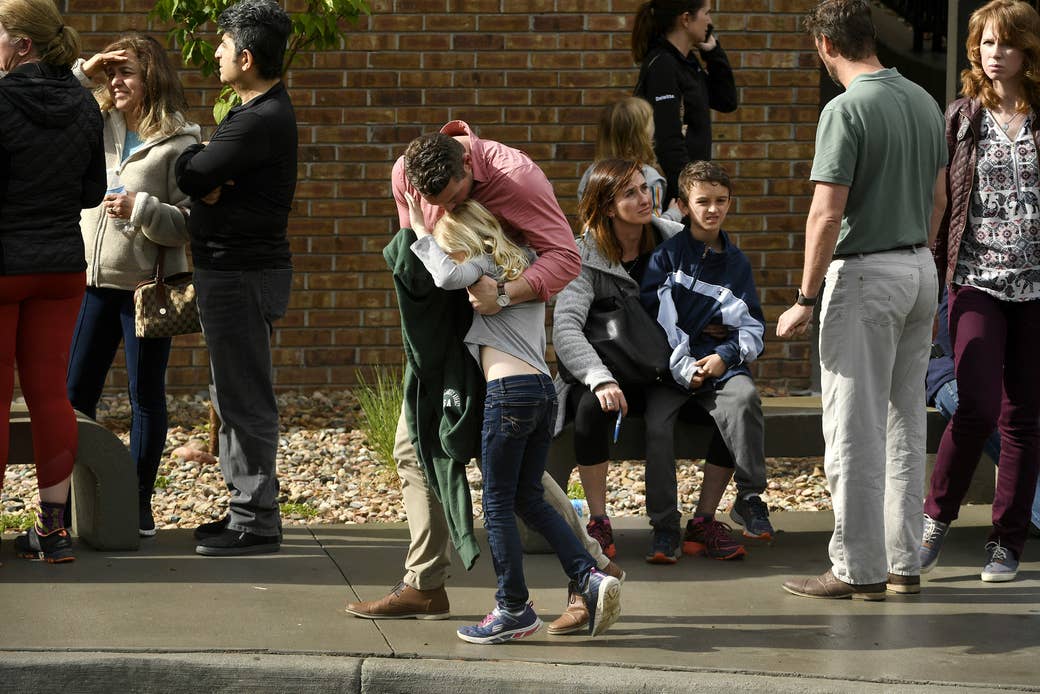
That boy, 18-year-old Devon Erickson, and Alec McKinney, 16, were arrested and charged after the May 7 STEM school shooting. Authorities say they opened fire in a British literature class, room 107, during a screening of The Princess Bride.
Unlike in the shootings that consume front pages and cable news for days on end, only one person died in the STEM shooting: 18-year-old Kendrick Castillo, who was one of three students who rushed the older shooter to try to stop him. Castillo’s family still attends court hearings wearing shirts with his face printed on them, but only the local reporters are left in town to cover them.
There’s been a national movement in the media, especially after Parkland, to responsibly limit school shooters’ names and images out of concern for glorifying their acts or inspiring copycats. Outlets, including BuzzFeed News, have adopted this approach. But in this case, the suspects’ backstories illustrate the root factors of the violence — and paint a deeper portrait of the country at large.
Both suspects had mental health issues and self-medicated by abusing drugs, both illicit and prescription. The younger suspect’s father was an undocumented immigrant, a felon the US government deported back to Mexico last year. In addition, the younger teen was transgender — the first known trans suspected mass shooter in US history — and told authorities he wanted to take revenge on students who had misgendered him. He had also been self-harming, inflicting deep cuts all over his body, and eventually developed a desire to harm others. On social media the pair discussed bullies, and the idea of an attack was first brought up over Snapchat. They found easy access to guns by breaking into a parent’s supposedly secure gun safe.
To produce this in-depth account of the events that led up to that day, BuzzFeed News traveled to Highlands Ranch and interviewed more than a dozen people close to the suspects. Nearly all declined to be identified, as they did not want to be associated with the shooters or had been told by authorities not to speak to the media (the details of both suspects’ cases were mostly suppressed by a court order). But what we discovered was an act of violence spawned from the convergence of major complex issues the country is grappling with — a microcosm of America in 2019.
The STEM attack also broke the pattern of past school shootings in two terrifying ways: First, unsealed documents reveal the pair were high on drugs during the shooting, which is something experts say is nearly unheard of. Most school shooters, regardless of their history of drug use, "are clean and sober on the day [they decide to] to kill people,” said Peter Langman, a psychologist who studies school shooters and runs SchoolShooters.info, a site offering prevention suggestions.
Second, this was the first school shooting in decades to involve two attackers — something so rare that a prominent breaking news guide explicitly advises, “There’s almost never a second shooter.” The last time it happened in a US school was 20 years ago in Columbine, the attack that gave rise to the lockdown generation as we know it. Columbine is just 15 minutes down the road from STEM.
On one day in May, various threads of the country intersected, culminating in the most American of crimes.
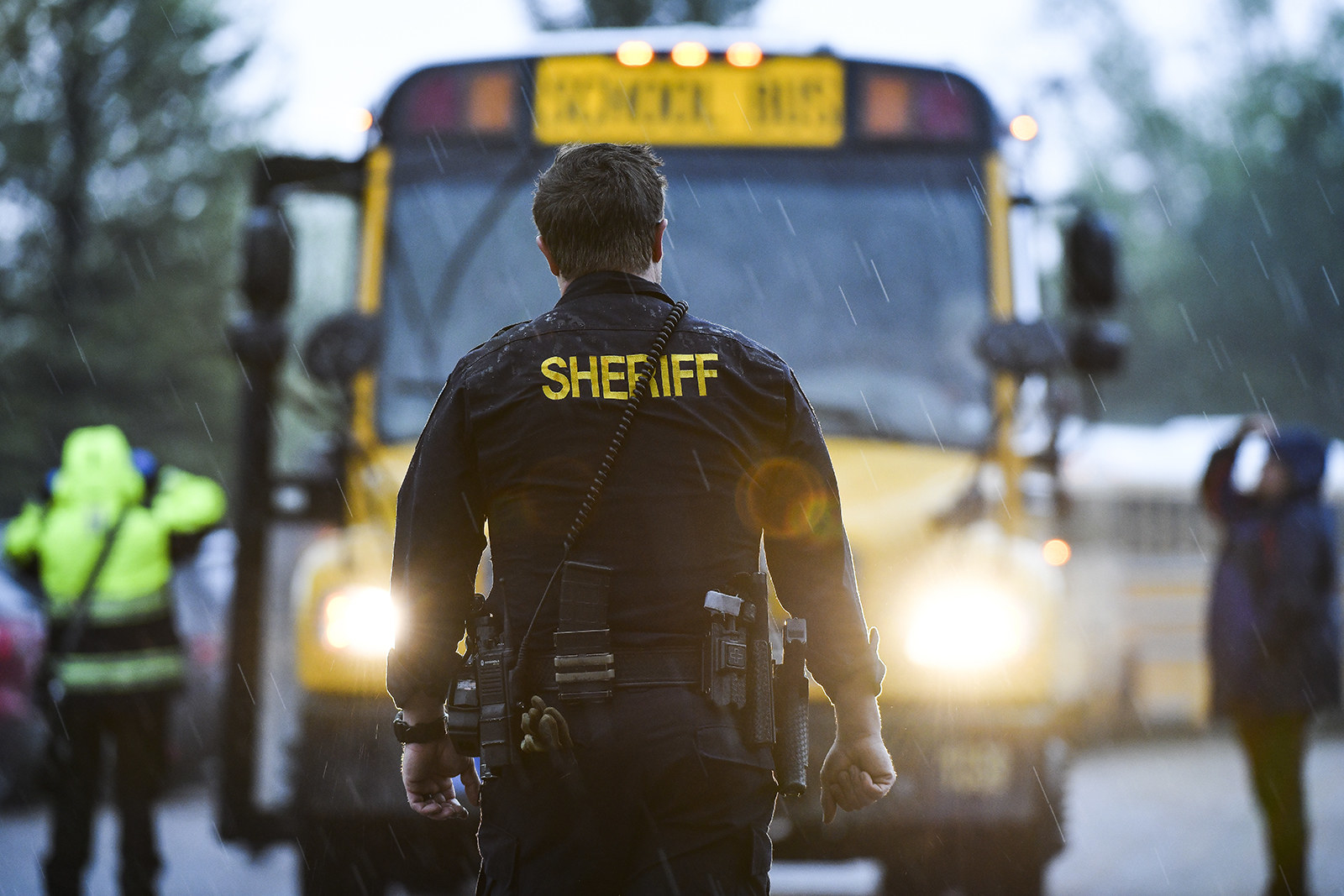
Earlier this month, on June 14, McKinney appeared at a hearing at Douglas County Courthouse, dressed in khakis, a black polo shirt, and shackles. His family members, including his grandparents and aunt, sat in the front row just behind him. As his mother wept, he occasionally stole glances in their direction, but mainly looked straight ahead or spoke with his legal team.
Several days later, on June 20, the court would unseal documents that would reveal that McKinney, although he was two years younger than Erickson, was the leader behind the attack. He’d been planning a school shooting for a few weeks, he told police during an interview for which his mother was also present. He also said he’d been the one to recruit Erickson, according to the documents, even threatening him with an ax if he refused.
He was seeking revenge on certain students who had bullied him for being trans, wanting classmates to “have to suffer from trauma like he has had to in his life,” according to police reports of interviews with both suspects. The 16-year-old suspect told police he wanted to kill two students in particular who had repeatedly bullied him about his gender, according to the documents. One student “hated him,” he told police, and said he was disgusting for presenting himself as male; the other referred to him as “she.”
“He wanted everyone in that school to suffer and realize that the world is a bad place,” according to police notes of an interview with him. (The younger suspect’s public defender did not respond to requests for comment for this story. His mother could not be reached and did not respond to a letter. The district attorney’s office deferred all questions to the court due to the suppression orders.)
The unsealed court documents painted a picture of the younger suspect that stunned some of those close to him. “I’m sorry but after reading the court docs I really don’t want to talk about [him],” one of his longtime friends told BuzzFeed News last week. “I feel like I’m going to puke.”
The same 16-year-old friend allowed BuzzFeed News to use all of the information she’d shared, including parts she’d previously asked not be reported. “I had no idea. I thought I knew everything about him,” she said. “I’m not protecting him anymore.”
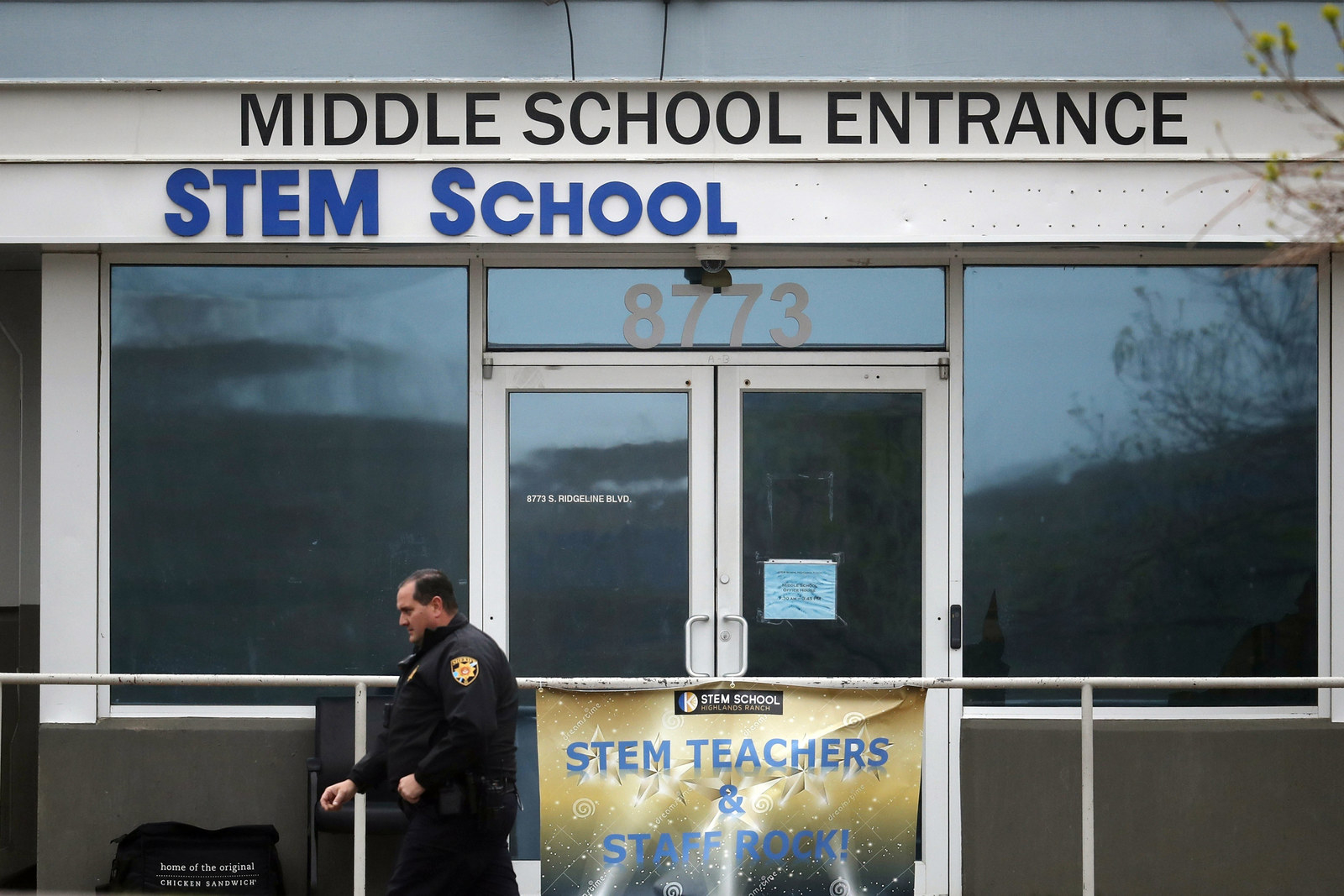
McKinney lived in Castle Rock, about a 30-minute drive south of Highlands Ranch, in a home overflowing with extended family members, including his grandparents, aunt, uncle, mother, and siblings. Surrounded by streets with names inspired by the frontier — Maverick Court, Rawhide Circle, Black Feather Trail — the two-story home sits on a cul-de-sac in a bland housing development, less than a 10-minute drive from the courthouse.
His father, Jose Evis Quintana, 33, had not been an active part of McKinney’s life in recent years, said friends, and he was deported by the US government for the third time in 2018. Quintana had been jailed for 15 months in Colorado, after a 2009 domestic violence incident against McKinney’s mother, Morgan McKinney, 32. That aggravated felony conviction for menacing with a weapon made him subject to removal, an ICE spokesperson told BuzzFeed News. “His dad wasn’t a good dad,” McKinney’s ex-boyfriend said.
McKinney had a complicated history of mental health issues and substance abuse. Three close friends, including his ex-boyfriend, who dated him from October to December last year, and his aforementioned longtime friend, told BuzzFeed News that McKinney was an avid drug user, taking marijuana, cocaine, and prescription pills, specifically Xanax, on a regular basis around the time of the shooting.
“None of that sounds true,” said a family member of the younger suspect, who asked to remain anonymous. They acknowledged that he had “incidents” of drug use in the past but denied that he regularly used cocaine and Xanax. “That just doesn’t seem like him at all,” the family member said.
But the longtime friend and ex-boyfriend both insisted that the suspect’s family was unaware of the drugs he used or the extent to which he used them. “It was getting so bad that we were considering planning an intervention meeting to try to get him to stop,” said another friend who’d known him since middle school.
McKinney told the longtime friend and the STEM student he’d dated that because of his drug use his mother would not allow him to start taking testosterone. He hated being in a female body and had first started using he/him pronouns and the name Alec in the eighth grade.
Taking drugs also helped temporarily quiet the voices in his head, the 16-year-old suspect told the longtime friend and his ex-boyfriend. But the drugs eventually exacerbated his symptoms. “He told me the voices were getting worse,” said the longtime friend.
“He would talk about hallucinating sometimes or his thoughts not being his own sometimes,” said a friend from middle school.
The family member confirmed to BuzzFeed News that younger suspect had been hospitalized multiple times in the past for mental health issues. His ex-boyfriend and the longtime friend both said he had spent time as an inpatient at Jefferson Hills, a secure residential program for young people that treats “emotionally and behaviorally challenged youth,” according to its website. A Jefferson Hills staff member declined to say if he had been treated there, noting it would be a violation of patient privacy laws to do so. Located in nearby Aurora, the facility is just under 2 miles away from the Century Aurora movie theater, where a shooter entered a midnight film screening in 2012 and killed 12 people.
In an interview with police, the younger STEM suspect said he’d been suicidal and homicidal since the age of 12. Friends feared he would eventually kill himself, but all expressed surprise that he would hurt someone else. He regularly told his ex-boyfriend that he wouldn’t be alive next year. The scars from his years of self-harm were deep. “His scars were so bad, most of his cuts needed stitches. But he couldn’t get them, because he didn’t want to tell his mom,” said the longtime friend. “He cut anywhere, from his ankles up to his shoulders.”
But his self-harm also gradually slid into harming others. The longtime friend confirmed that the suspect had given Xanax to a girl who’d accidentally overdosed on Feb. 8, 2018. She survived, but authorities placed him in a juvenile diversion program, an intervention strategy aimed at keeping children away from the criminal justice system. (The district attorney’s office, which runs the program, told BuzzFeed News it could not confirm any juvenile’s involvement in the program due to privacy restrictions.) The ex-boyfriend said the younger suspect had told him he’d been placed in diversion because he “nearly killed a kid,” but hadn’t gone into details.
Diversion includes therapy, substance abuse treatment, and drug testing, but the younger suspect had been able to cheat some of the tests, according to his ex-boyfriend and his longtime friend. Usually a male officer accompanies a male in the diversion program during a urine drug test, but because he was trans, he’d been unaccompanied and was able to swap in an earlier clean sample, he told his ex.
On the day of the STEM shooting, after threatening Erickson if he didn’t partake in his plan, McKinney used nail polish to write a final message on a closet wall inside Erickson’s home where the gun safe was kept: “The voices win.”
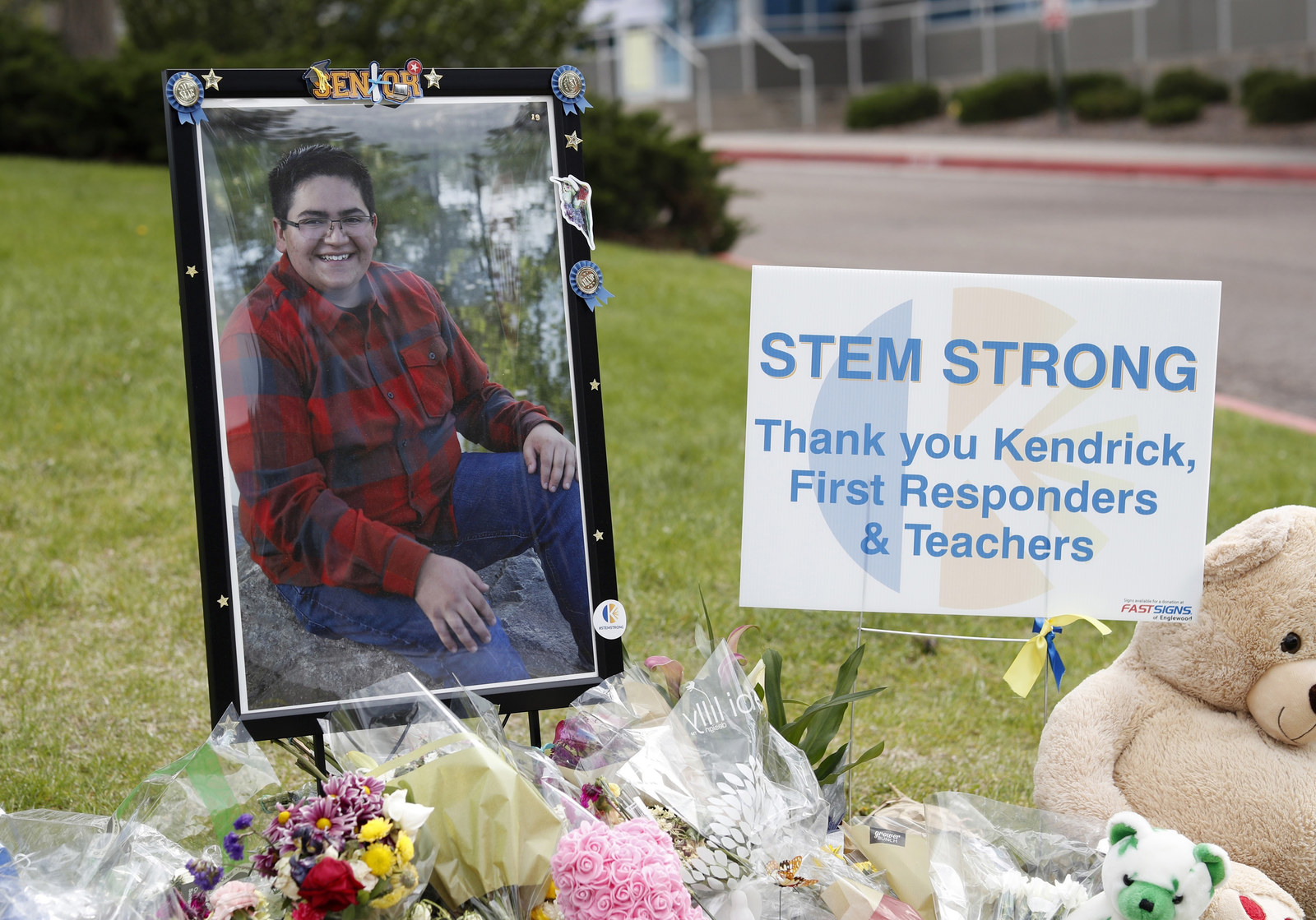
Unlike the Columbine shooters, who’d been friends for years, the two STEM shooting suspects had known each other just a few months, bonding quickly over music, drugs, and their shared mental health issues.
It's incredibly rare for two students to carry out a school shooting, mainly because teens aren't great at keeping secrets, psychologists told BuzzFeed News, adding that usually one of them tells someone else about the plan or backs out.
“There’s been a lot of potential school shootings that had two or more perpetrators involved,” Langman said. “The fact that so few of them actually occur with two or more perpetrators suggests to me that the more people that are involved, the more likely it is going to be discovered and prevented.”
The year before the Columbine shooting, in 1998, an 11-year-old and a 13-year-old shot their classmates and teachers in Jonesboro, Arkansas. Five people died. More recently, in March of this year, a pair of shooters, aged 17 and 25, opened fire in their former school in southeastern Brazil, killing five students and three adults. Investigators there said the younger shooter had also been the orchestrator.
The tiny sample size does not give experts a huge amount of data, but usually if two shooters are involved in an attack, either it’s a man and woman in a close relationship — such as the married couple who killed 14 people at a social services center in San Bernardino in 2015 — or there are two male perpetrators in a complicated leader–follower relationship.
“One of the two typically is psychopathic and the other person is not,” said Reid Meloy, a forensic psychologist and consultant to the FBI for over 18 years, stressing he was speaking broadly about research into two shooters, and not about the STEM shooting suspects specifically. “The other person is in a sense depending on the person who is psychopathic — depending on the first person to direct the show and make the operational decisions of what they’re going to take out.”
While psychologists have spent a lot of time studying shooters — who they are, what makes them tick — there’s actually no singular list of personality or background traits they’ve identified or a checklist of unifying characteristics among those who commit an act of hatred.
“The idea that school shooters are typically outcasts, misfits, loners who are bullied into retaliation is largely inaccurate,” Langman said.
Sometimes there are factors that overlap, in particular some troubled sense of manhood. “What I see in many school shooters is some type of body-related issue, some sense of damaged masculinity,” said Langman.
The younger suspect’s struggle with masculinity was more overt than the older suspect’s — a combination of being in a female body, as well as being insulted and misgendered by classmates. “That stuff really got to him a lot,” said the anonymous family member. But the older suspect is extremely skinny for an 18-year-old, weighing just 95 pounds, according to charging documents. Two friends told BuzzFeed News his small size had frustrated him in the past. (His mother declined to comment for this story, as did his lawyer, Julia Stancil.)
McKinney started as a sophomore at STEM after transferring from the nearby Douglas County High School at the start of the 2018–19 school year. Erickson took classes at the nearby Arapahoe Community College during the fall semester, but after failing multiple classes he returned to STEM in the second semester, which is when he and the younger suspect became close, according to two friends.
Before the shooting, Erickson told McKinney’s ex-boyfriend that McKinney had introduced him to cocaine for the first time just a few months earlier. According to three close friends, including his ex-girlfriend, he had mostly used marijuana before that.
Erickson has been calling several STEM friends from prison in recent weeks, including his ex-girlfriend, who dated him from February to April. Despite rumors he was failing and wouldn’t graduate, he told her from prison that in fact he was on track to receive his diploma. He had been making plans for what to do once school was done, having previously told his ex-girlfriend he would find his own apartment and continue working as a delivery driver for DoorDash.
One friend from middle school said Erickson had told him he was taking a gap year but wanted to be a vocal coach. He loved music and had the old logo of one of his favorite bands — the San Diego–based emo hip-hop group L.I.F.T. — tattooed on his left wrist. Just over a week before the shooting, he had dyed his hair pink to mimic rapper Lil Peep.
Two people said that he had reached out to them and apologized for past arguments in the weeks leading up to the shooting, seemingly in an attempt to turn over a new leaf before graduation. He and his ex-girlfriend had stopped speaking after he broke up with her, but the Sunday before the shooting he reached out to say sorry.
When she accepted his apology, he texted back, “Wow i feel so relieved geez.”
“My life feels back in order kinda haha,” he added. “I’m still lonely as fuck but at least I have somebody to talk to lol."
He told his ex-girlfriend before the shooting that he had mental health issues, although it is unclear if he was diagnosed by a medical professional. He was adopted, and three friends, including his ex-girlfriend, said his home life had been turbulent.
Friends said all this translated into a very dark sense of humor. “If you asked me who was most likely to shoot up the school in a hypothetical situation, I would have jokingly said Devon, since he made so many jokes about reaching into his bag and pulling out his glasses case or saying, ‘Don’t come into school tomorrow,’” said one STEM student who was a friend of Erickson’s. “But I knew these were jokes, as we do, because I would always jokingly reply with ‘lol no I’ll definitely be in tomorrow,’ and we would high-five.”
“His style of humor and his general personality was very centered around being ‘provocative’ and ‘edgy,’ I say with air quotes,” said his friend from middle school. “A lot of times that meant using language or rhetoric that, because it is designed to be shocking, normalizes those types of thoughts and words that can be violent or hateful.”
His ex-girlfriend said that although she cared for him deeply, he’d been extremely down emotionally and he probably would have made it onto her imaginary list of possible school shooters. “If I absolutely had to pick somebody, or I had to pick three people, he wouldn’t be the first,” said his ex-girlfriend, trailing off in thought. “He never seemed dangerous to me, but also I don’t know who else I would have named.”
She noted that Erickson would regularly hold up his hands as finger guns and pretend to shoot people, always holding it a few beats longer than was comfortable.
McKinney’s ex-boyfriend said that the idea of Erickson being involved in the shooting “fit into my concept of him.”
“It wasn’t something I could never believe he could do,” he said. “Alec was more of a shock. Alec was violent but more towards to himself.”
Whatever the reason, McKinney saw him as the person with whom to share his school shooting plan — and demand he help execute it. And despite telling police that he had intended multiple times to alert authorities or an adult of the upcoming scheme, Erickson never said a word.
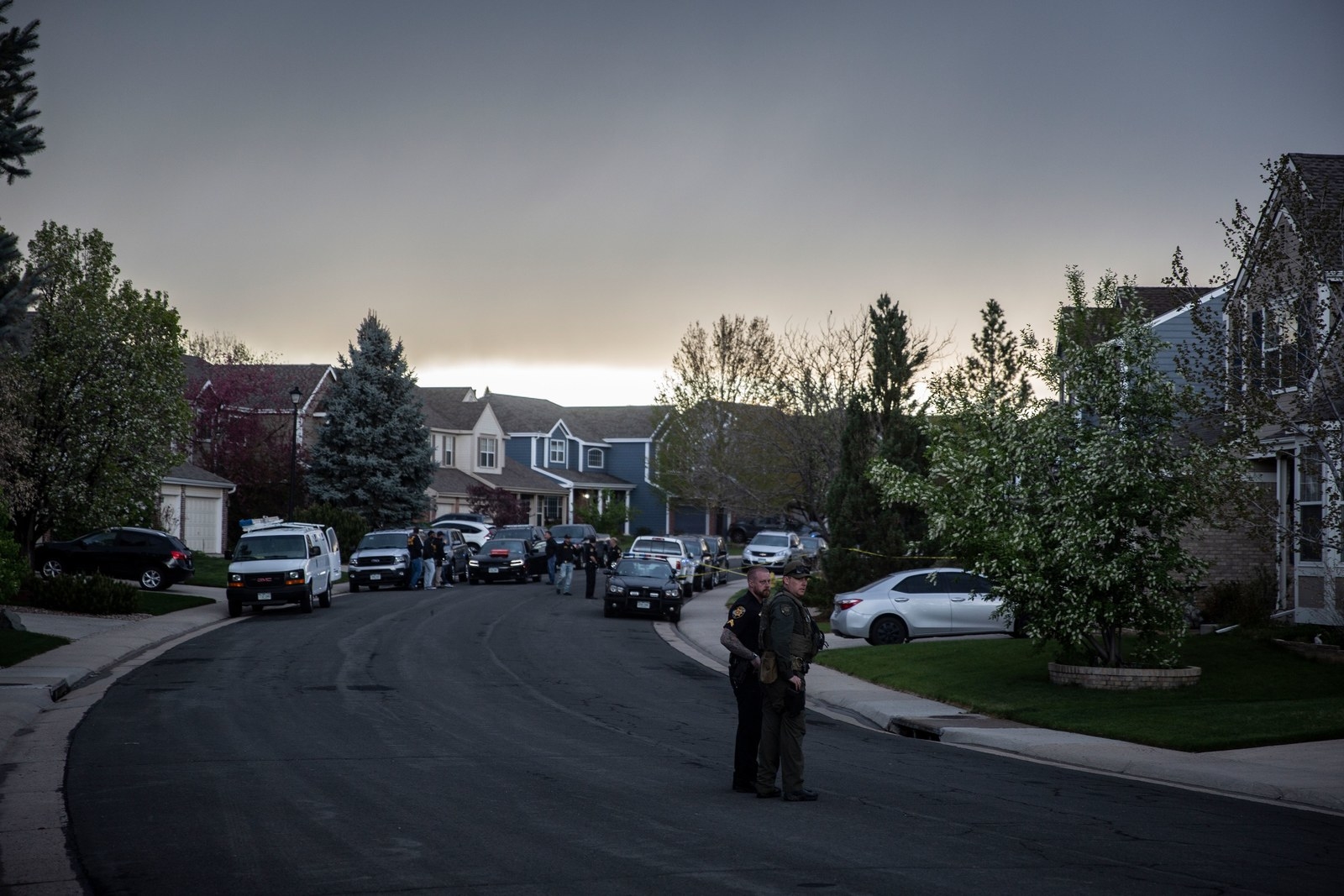
The night before the shooting, the pair chatted on Snapchat.
According to the court documents, which form the basis of reporting in this next section, unless otherwise noted, Erickson claims that McKinney warned him not to go to school the following day as he was “super suicidal” and wanted to get revenge on specific people, according to court documents, including someone who had passed around a false rumor about them having sex. It’s unclear if the rumor was about the two suspects having had sex, or McKinney and the person he wanted to target.
According to Erickson, McKinney also said he might kill his own mother and siblings, and Erickson tried to talk him out of it. Erickson said he had a screenshot of the conversation, which he’d planned to use to warn friends, but McKinney threatened to kill him if he told anyone.
On the morning of the shooting, Erickson left his photography class around 10:30 a.m., leaving his belongings. His ex-girlfriend texted, asking if Erickson was OK, and he replied that he’d just thrown up.
He went home with an unnamed friend, whom he did not alert to McKinney’s plan. He then returned to school.
He went home a second time, supposedly to call the police, but McKinney messaged him and demanded he pick him up from school, which he did.
The two went to Erickson’s parents’ house in a tree-lined development just a few minutes’ drive from school. They hung out in the basement, and according to Erickson, McKinney used cocaine. McKinney was “off” and “pissed off at a bunch of people,” according to police descriptions of Erickson’s interview. He demanded to know where Erickson’s parents’ gun case was, which they’d spoken about weeks earlier.
Erickson tried to leave after showing McKinney the gun case, but McKinney threatened him with an ax. They pried the gun case open with the ax and a crowbar.
After doing cocaine together, they spray-painted Erickson’s mother’s car — writing “fuck society” and “666” and drawing a pentagram, according to a local reporter — and then set it on fire.
They drove back to the school in Erickson’s 2013 Honda Civic, the same car he used to do deliveries. A .22-caliber rifle and Glock 21 handgun were stashed in Erickson’s guitar case. In his backpack, McKinney carried a Beretta M9, a semiautomatic pistol used by the military, and a revolver. He wore his favorite Nirvana hoodie.
Erickson said McKinney promised he would live if he told everyone to stay still and watched the classroom’s second door. He said he didn’t know the full plan, but knew McKinney wanted to kill one specific student.
After dropping his guitar case in his classroom, Erickson told his teacher he felt ill, planning to go to the school’s office and alert someone to the shooting. The teacher sent another student to accompany him, but Erickson had a panic attack and went to the bathroom first instead. By the time he got to the office, McKinney was there and threatened to kill him if he spoke, Erickson told police. Erickson said he didn’t want to tell the other student of McKinney’s plan because he wanted to alert an adult instead.
The pair then returned to room 107, where the class was watching their movie. It was about 1:50 p.m. Erickson said when he saw McKinney reaching for a gun, he grabbed the Glock from his guitar case, pointed it straight up and yelled at people to get down. He said he had been intending to warn others that McKinney had a gun and planned to kill people.
That’s when two students, including Castillo, rushed at Erickson to stop him. According to police, Erickson claims that when he was hit by Castillo and the other student, “that abrupt impact prompted the gun to go off.”
McKinney, meanwhile, claims to have shot at least one gun until it was empty. It’s unclear if he shot in room 107 or in other parts of the school, although a total of eight people had been injured once the shooting was over.
Students and a teacher tackled McKinney, but he was able to get up, retrieve another gun, and run out of the classroom with the intent of killing himself.
But he did not know how to work the safety lock and couldn’t fire the gun. A security guard stopped him at gunpoint and ordered him to the ground. He complied.
Meanwhile, an injured student held Erickson down until police arrived.
Around 22 minutes later, his ex-girlfriend ran past him as he lay sprawled on the ground, police surrounding him.
In his calls to his ex from prison before the court documents were unsealed, Erickson told her the case is “a lot more complicated” than had been reported. But she doesn’t want him downplaying what he did. “This is never going to be the mistake he made in high school," she said. "This will dictate his entire life.”
McKinney is currently being charged as an adult, but his lawyers are pushing for the 16-year-old’s case to be returned to the juvenile system, where the maximum sentence is seven years, according to the district attorney. “I don’t think prisons are good institutions, but Kendrick is going to be dead forever,” said McKinney’s ex-boyfriend. “Seven years doesn’t really seem like a consequence.”
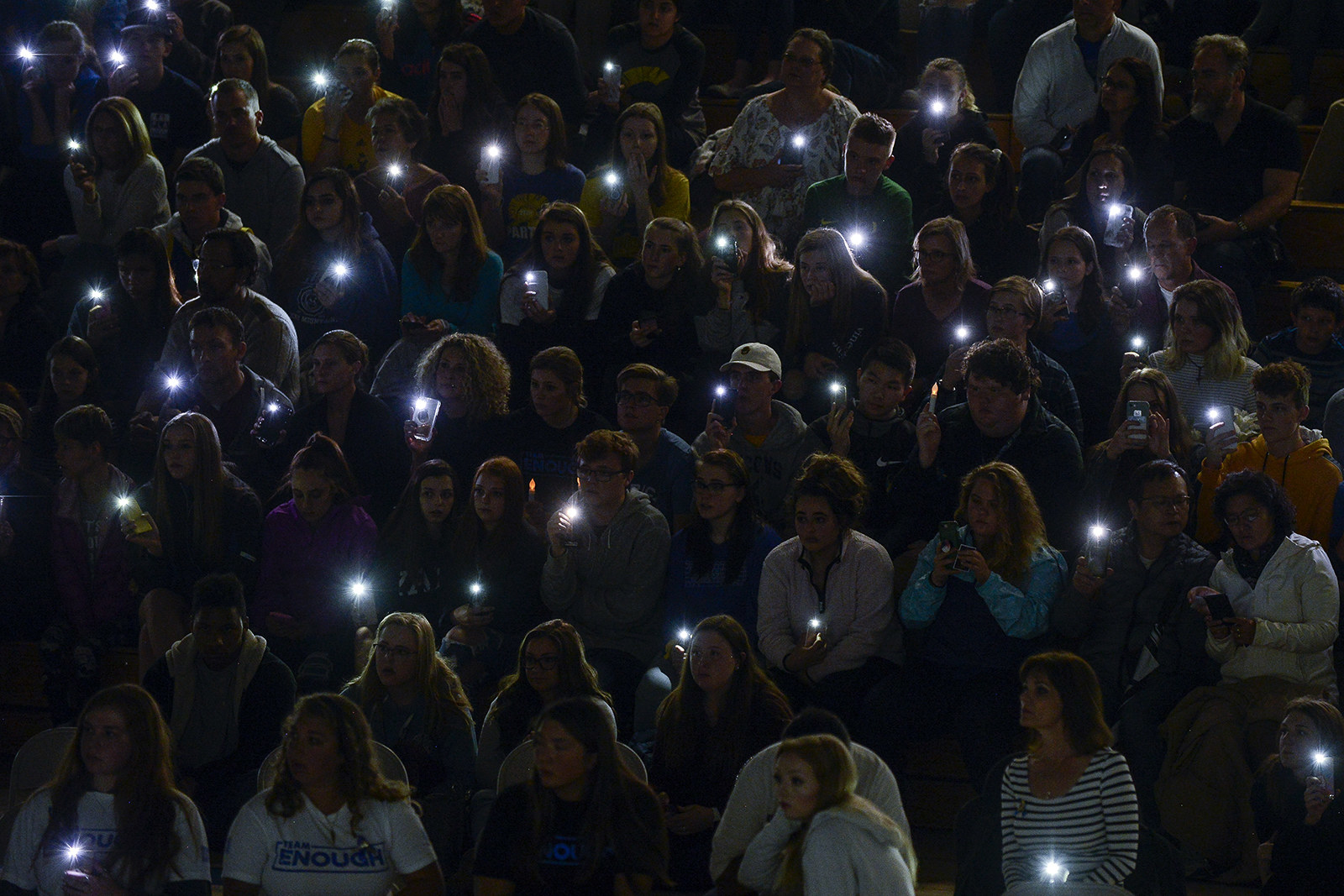
At a candlelight vigil the day after the shooting, hundreds of grieving parents and students packed into the gymnasium of a nearby school. But when advocates and local politicians began speaking about gun control, students walked out in droves, demanding that the focus be on remembering Castillo, their sweet and smart senior classmate who had given up his life for them. They held their own memorial for him outside instead.
Castillo was an award-winning, four-year member of the school's robotics team who had completed multiple technology internships. His grandfather had served in the Marines, and Castillo had always wanted to emulate that service. “He loved patriotism,” his father John told CNN. “We are Hispanic by nature but we love America to the core.”
Castillo had been due to finish his last class in just three days when he was killed saving the lives of his classmates. If the country had seen the worst of itself on that day of the shooting, it also saw the best of itself in Castillo.
On May 15, around 2,000 mourners gathered at Cherry Hills Community Church to pay their respects to the teen. Colorado Gov. Jared Polis had declared it Kendrick Castillo Day across the state.
A procession of hundreds of Jeeps, Castillo’s favorite car, lined the roads to the church service. Castillo’s beloved green Jeep Cherokee, which he’d saved up for and bought himself, was among them. A full police escort, the first-ever in Douglas County for a private citizen, accompanied his family.
A quote Castillo used as his email signature was printed on the front of the service program: “A ship is always safe on the shore,” it read, “but that’s not what ships are for.”
At the candlelight vigil, Erickson’s ex-girlfriend had hugged Castillo’s father. She’d never seen someone look so sad. She told him his son “had the kindest soul of anyone [she’d] ever met.”
It was devastating, she said, “to look in his eyes and know that … this person [she] really deeply cared about took his son away from him.”
But it’s not her ex she wants to think about now as she moves forward with her life — it’s Castillo.
“Kendrick died for us,” she said, “so we have to live for him.” ●
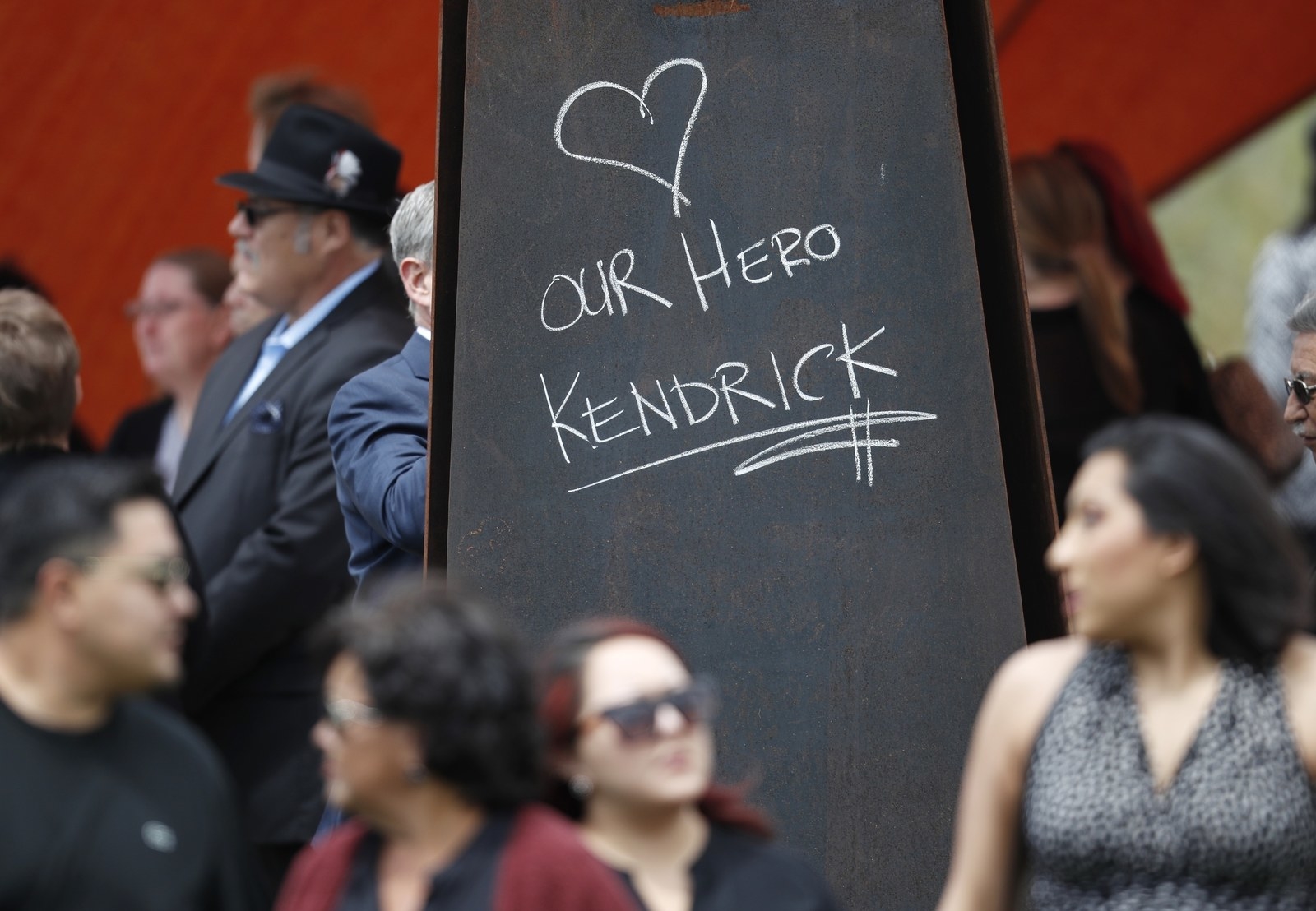
CORRECTION
The candlelight vigil held after the shooting took place at the Highlands Ranch High School gymnasium. A previous version of this story said it had occurred at the STEM school. A reference to the older suspect's height was also removed.


